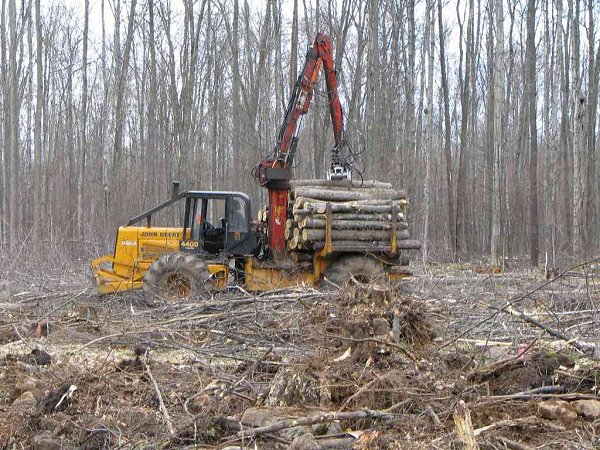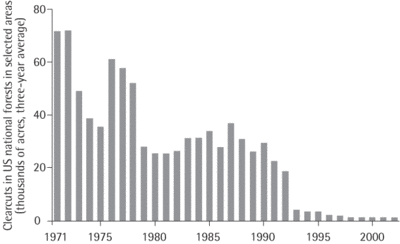This is an example of how historians go about studying a particular environmental history issue.
The National Forests were a timber reserve, harvesting was intended--managing a renewable resource. But there are different methods of harvesting
- selective cutting vs. clearcutting
- selective cutting--cut only the biggest trees--was usual method in National Forests before WWII
- if you aren't
careful
selective cutting can lead to a forest of low quality
trees
technology
increased the advantages of clearcutting (video)

foresters argued for the advantages of clearcutting
- cheaper and quicker
- didn't leave behind low quality trees
- provides a variety of habitats for animals and birds--provides clearings
- some trees
regrow better in
full sun rather than shaded in a forest
recreational users of national forests began to complain about clearcuts: larger areas being clearcut, more in areas that people used
what could the people who disliked clearcutting do?
- Wilderness Act protected some land from logging
- but a lot
of people
making recreational use of the forests were using
land intended for harvest--Forest service was
still arguing for
multiple use
- National Environmental Protection Act (NEPA) of 1970 required environmental impact statements--research and a document on the environmental impact of a government action
- law didn't
require
something be done about environmental impact, but
public opinion put
pressure
- also created an advisory body to the President called the Council on Environmental Quality
Council recommended the Nixon administration issue an executive order against clearcutting in 1972
Nixon memo
the proposed "ban" on clearcutting was never issued
Instead, what happened to reduce clearcutting was a court decision
- In November 1973 opponents of clearcutting had won a major court victory
- The Izaak Walton League (a hunting organization) brought suit against clearcutting in the Monongahela National Forest
- a federal judge declared that clearcutting in West Virginia (violated the Forest Management Act of 1897 (usually called the Organic Act), which specified that large and mature trees in National Forests could be marked, cut, and sold
- To the shock of the Forest Service and the timber industry, the decision was upheld by the Fourth Circuit Court of Appeals in 1975.
National Forest Management Act of 1976 specified that clearcutting should be used only when it was the optimum method.

Clearcutting has
continued to decline--it
is hard to protect the old ways of doing things if
public opinion is
going the other way